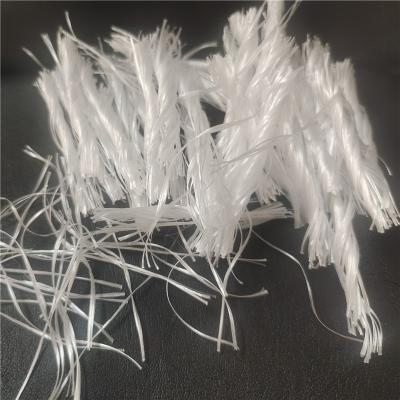Performance Characteristics of Polypropylene Fiber
(1) Light weight
The density of polypropylene fiber is 0.90-0.92 g/cm3, which is the lightest among all chemical fibers. It is 20% lighter than nylon, 30% lighter than polyester, and 40% lighter than viscose fiber. Therefore, it is very suitable for making wadding filler for winter clothing or fabrics for ski suits, mountaineering clothes, etc.
(2) High strength, good elasticity, wear resistance and corrosion resistance
Polypropylene fiber has high strength (the same in dry state and wet state) and is an ideal material for making fishing nets and ropes; The abrasion resistance and resilience are good. The strength is similar to that of polyester and nylon. The resilience is comparable to that of nylon and wool, and much greater than that of polyester and viscose fibers; Polypropylene fiber has poor dimensional stability, easy to pilling and deformation, and is resistant to microorganisms and moths; Chemical resistance is better than ordinary fibers.
(3) With electrical insulation and thermal insulation
Polypropylene fiber has high resistivity (7 × 1019Ω. Cm), the thermal conductivity is small. Compared with other chemical fibers, polypropylene fiber has the best electrical insulation and warmth retention, but it is easy to generate static electricity during processing.
(4) Poor heat resistance and aging resistance
Polypropylene fiber has low melting point (165~173 ℃) and poor stability to light and heat. Therefore, polypropylene fiber has poor heat resistance and aging resistance, and is not resistant to ironing. However, the anti-aging property can be improved by adding anti-aging agent during spinning.
(5) Poor hygroscopicity and dyeing
The hygroscopicity and dyeability of polypropylene fiber are the worst among chemical fibers, with almost no hygroscopicity and moisture regain less than 0.03%. Fine denier polypropylene fiber has a strong wicking effect, and water vapor can be eliminated through the capillary in the fiber. After the garment is made, the comfort of the garment is good, especially the ultra-fine polypropylene fiber, which can transfer sweat faster and keep the skin comfortable due to the increased surface area. Polypropylene fabric is easy to wash and dry due to its non hygroscopicity and small shrinkage.
Polypropylene fiber has poor dyeability, light color and poor dyeing fastness. Common fuels can not make it dyed, and colored polypropylene fibers are mostly produced by dyeing before spinning. It can be dyed with stock solution, modified with fiber, and mixed with fuel complexing agent before melt spinning.



